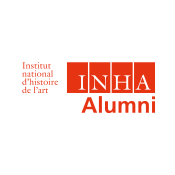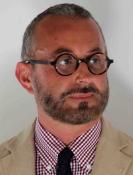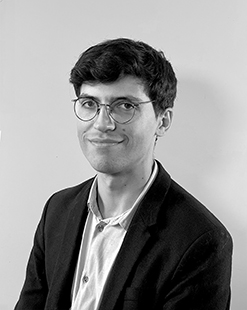Informations sur l’INHA, ses actualités, les domaines et projets de recherche, l’offre de services et les publications de l’INHA.
Alumni
Suivez le parcours et les actualités de celles et ceux qui sont passés par l’Institut national d’histoire de l’art.Mecthilde AIRIAU
2018 Chargée d'étude et de rechercheDoctorante en histoire de l'art médiéval sur la question de l’utilisation de la couleur par les peintres florentins au XIVe siècle sous la direction de Philippe Lorentz au sein du Centre André Chastel depuis 2017.
Chargée d'études et de recherche à l'INHA de 2018 à 2023 pour les programmes "Colorants et textiles de 1850 à nos jours", "Ontologie du christianisme médiéval en images" et "La fabrique matérielle du visuel".

Camille AMBROSINO
2019 Chargé d'études et de rechercheDoctorante en cotutelle – UPJV Amiens (TrAme) / Università degli studi di Genova (DIRAAS)
Chargée d'études et de recherche à l'INHA de 2019 à 2023
Jaynie ANDERSON
2003
Professor Emerita, The University of Melbourne, Australie.
Chercheuse accueillie à l'INHA en 2003.

Simon ANDRÉ-DECONCHAT
2003
Délégué-adjoint aux arts visuels au Ministère de la Culture.
Chargé d'études et de recherche à l'INHA de 2003 à 2007.

Katherine BAKER
2012
Assistant Professor of Art History, Arkansas State University, Etats-Unis.
Boursière de la Fondation Kress et chercheuse accueillie à l'INHA en 2012 et 2013.
Nicolas BALLET
2013
Attaché de conservation au service Nouveaux Médias du MNAM, Centre Pompidou.
Chargé d'études et de recherche à l'INHA de 2013 à 2016.

Marcello BARBANERA
2005
Professeur d’archéologie et d’histoire de l’art grecque et romaine – Sapienza Université de Rome, Italie.
Chercheur accueilli à l'INHA en 2005 et 2006.

Claire BARBILLON
1999
Professeure des universités - Directrice de l'Ecole du Louvre
Pensionnaire à l'INHA de 1999 à 2001
